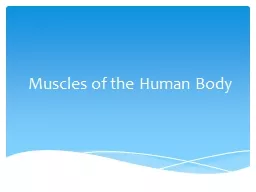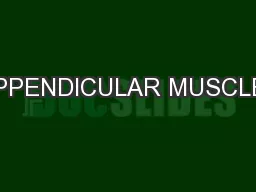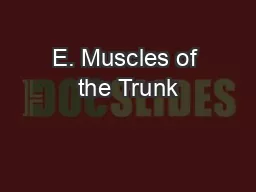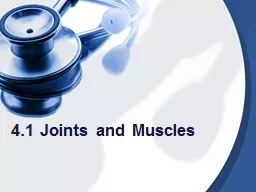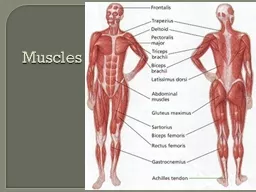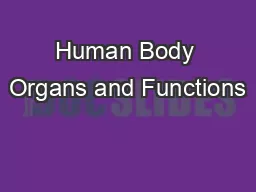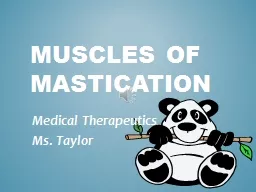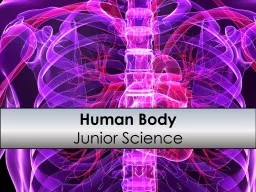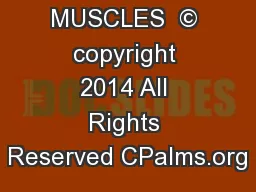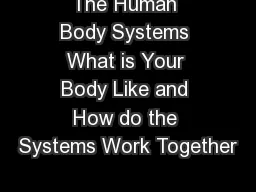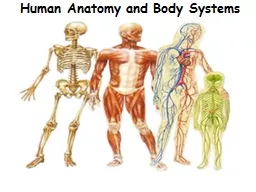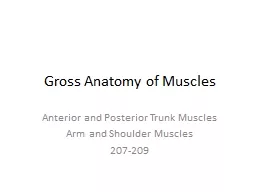PPT-Muscles of the Human Body
Author : giovanna-bartolotta | Published Date : 2018-03-09
Over 600 in the human body Allow the skeleton to move To cause movement both ends of each muscle must be attached to bone Origin or proximal attachment the attachment
Presentation Embed Code
Download Presentation
Download Presentation The PPT/PDF document "Muscles of the Human Body" is the property of its rightful owner. Permission is granted to download and print the materials on this website for personal, non-commercial use only, and to display it on your personal computer provided you do not modify the materials and that you retain all copyright notices contained in the materials. By downloading content from our website, you accept the terms of this agreement.
Muscles of the Human Body: Transcript
Download Rules Of Document
"Muscles of the Human Body"The content belongs to its owner. You may download and print it for personal use, without modification, and keep all copyright notices. By downloading, you agree to these terms.
Related Documents

